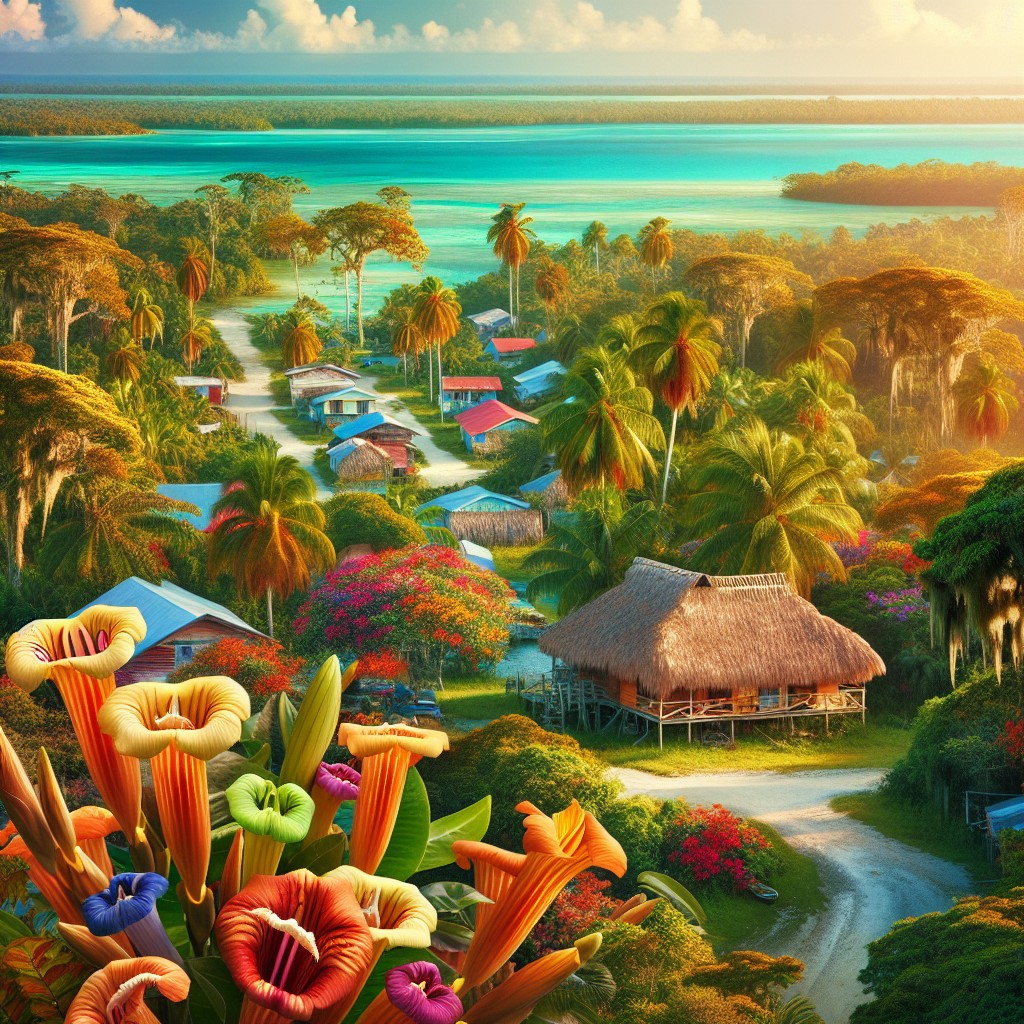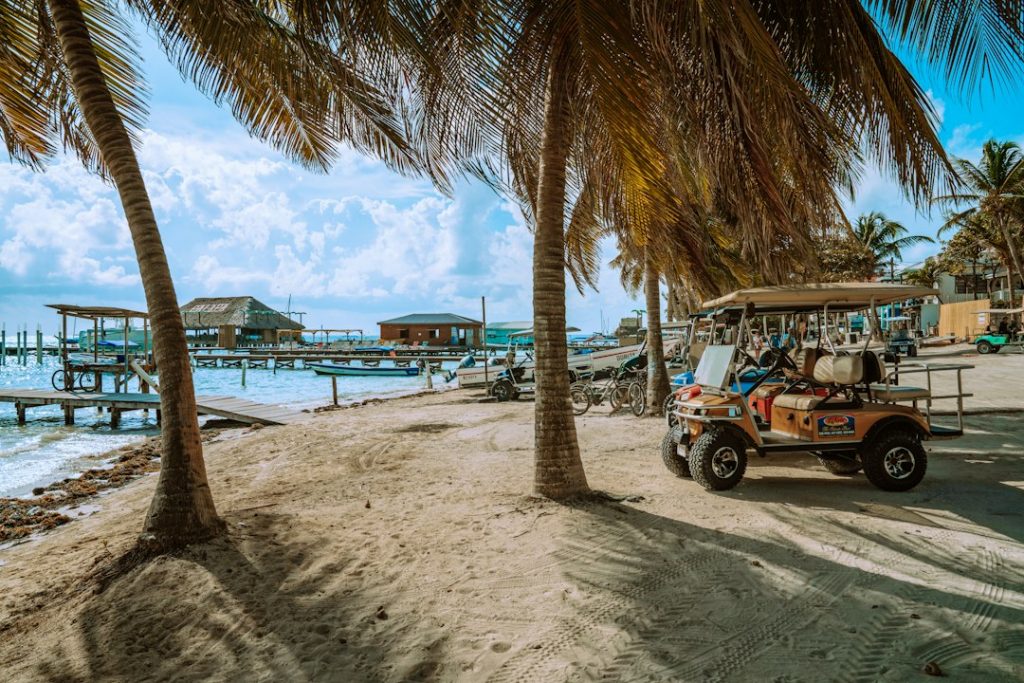Natural Resources of Belize: A Treasure of Tropical Wealth
Belize is a small country with a rich tapestry of natural resources, from lush forests and fertile agricultural lands to marine resources and mineral deposits. Understanding the natural resources of Belize isn’t just about recognizing what the land provides, but also appreciating the role these resources play in Belize’s economy, culture, and future. This article is worth reading for anyone interested in sustainable development, tourism, and the environment, as it explores how the Ministry of Natural Resources works to protect and manage these assets for present and future generations.
What Makes Belize’s Natural Resources So Unique?
Belize is located in Central America and boasts a diverse climate and geography, including coastal regions, rainforests, and the famous Belize Barrier Reef. These features contribute to the country’s natural resources and support the biodiversity that makes Belize a global environmental hotspot.
How Does the Ministry of Natural Resources Manage Belize Land?
The Ministry of Natural Resources undertakes the immense responsibility of managing land and resources in Belize. Through land management initiatives and policies for sustainable development, the ministry works diligently to improve the quality of life for present and future generations of Belizeans. Protection and sustainable use of Belize land is crucial to preventing environmental degradation and promoting economic stability.
What Are the Key Forest Resources in Belize?
Forests in Belize, particularly in the Maya Mountains, are rich in biodiversity and provide valuable timber resources such as mahogany and logwood. The forest sector is a key contributor to the timber industry in Belize, and responsible forestry practices ensure the sustainable harvesting of these resources.
How Important Are Agricultural Resources to Belize’s Economy?
Agriculture is an important sector of the Belizean economy. Fertile and arable land supports the cultivation of crops such as citrus fruits, bananas, and sugar cane. Agriculture not only provides employment for many Belizeans but also contributes significantly to export revenue.
Summary
- Belize is a small country in Central America with a rich variety of natural resources.
- Forests and timber resources are an important part of Belize’s economy and culture, but deforestation is a major concern.
- Belize’s coastal and marine resources include coral reefs, mangroves, and fisheries, which are threatened by overfishing and pollution.
- Mineral resources in Belize are limited, but include gold, bauxite, and limestone.
- Agriculture is a major industry in Belize, with crops like sugar, citrus, and bananas, but there are concerns about land use and pesticide use.
Forests and Timber Resources in Belize
Belize is known for its extensive forests, covering approximately 60% of the country’s land area. These forests are home to a diverse range of flora and fauna, including rare and endangered species such as jaguars, tapirs, and scarlet macaws. The timber industry in Belize is an important economic sector, providing employment and income for many Belizeans. Timber exports contribute significantly to the country’s foreign exchange earnings.
However, Belize’s forests face numerous challenges. Illegal logging, unsustainable logging practices, and deforestation for agriculture are some of the major threats to the country’s forests. These activities not only lead to habitat destruction and loss of biodiversity but also contribute to climate change by releasing carbon dioxide into the atmosphere. Efforts are being made by the government and various organizations to promote sustainable forestry practices and protect Belize’s forests for future generations.
Belize’s Coastal and Marine Resources
Belize is blessed with a stunning coastline and abundant marine resources. The country’s barrier reef, known as the Belize Barrier Reef Reserve System, is the second-largest coral reef system in the world and a UNESCO World Heritage site. The reef is home to a vast array of marine life, including colorful coral formations, fish, turtles, and manatees. The coastal and marine resources of Belize are not only important for tourism but also for fishing and other economic activities.
However, these resources are under threat from various factors. Overfishing, destructive fishing practices, pollution from coastal development and agriculture, and climate change are some of the major challenges facing Belize’s marine ecosystems. These threats not only impact the biodiversity of the reef but also affect the livelihoods of local communities who depend on fishing for their sustenance. Conservation efforts, such as marine protected areas and sustainable fishing practices, are being implemented to protect Belize’s coastal and marine resources.
Mineral Resources in Belize
Belize has limited mineral resources compared to other countries in the region. However, it does have some deposits of oil, natural gas, limestone, and dolomite. Oil production in Belize began in the early 2000s and has contributed to the country’s economy through export earnings and government revenue. Natural gas is also used for electricity generation in Belize.
While mineral extraction can bring economic benefits, it also poses environmental concerns. Oil spills, water pollution, habitat destruction, and greenhouse gas emissions are some of the negative impacts associated with mineral extraction. It is crucial for Belize to balance the economic benefits of mineral resources with environmental protection and sustainable practices.
Agricultural Resources in Belize
Agriculture is an important sector in Belize’s economy, contributing to employment and export earnings. The country has fertile soil and a favorable climate for agriculture, allowing for the cultivation of a wide range of crops such as sugar cane, citrus fruits, bananas, and vegetables. Belize is also known for its organic farming practices and sustainable agriculture initiatives.
However, the agricultural industry in Belize faces several challenges. Climate change, including increased temperatures and changing rainfall patterns, poses a threat to crop production. Land use issues, such as deforestation for agriculture and land degradation, also impact the sustainability of the sector. Efforts are being made to promote climate-smart agriculture and sustainable land management practices to ensure the long-term viability of Belize’s agricultural resources.
Belize’s Water Resources
Belize is blessed with abundant water resources, including rivers, lakes, and groundwater. These water resources are not only important for agriculture but also for tourism, energy production, and domestic use. The country’s rivers provide opportunities for recreational activities such as kayaking and fishing.
However, Belize’s water resources face challenges such as pollution and overuse. Industrial activities, agricultural runoff, and inadequate wastewater treatment contribute to water pollution in some areas. Overuse of water resources can lead to depletion of groundwater reserves and reduced availability of water for various sectors. Sustainable water management practices, including conservation measures and improved wastewater treatment, are essential to protect Belize’s water resources.
Wildlife and Biodiversity in Belize
Belize is known for its rich biodiversity and diverse ecosystems. The country is home to a wide range of wildlife, including over 500 species of birds, 145 species of mammals, and numerous reptiles, amphibians, and insects. Belize’s diverse ecosystems include tropical rainforests, mangroves, wetlands, savannas, and coral reefs.
The biodiversity of Belize is not only important for its ecological value but also for its economic significance. The country’s wildlife and natural landscapes attract tourists from around the world, contributing to the tourism industry. Additionally, Belize’s biodiversity provides ecosystem services such as pollination, soil fertility, and carbon sequestration.
However, Belize’s wildlife and biodiversity face threats from habitat loss, deforestation, climate change, and illegal wildlife trade. Habitat destruction due to agriculture, logging, and infrastructure development is a major concern. Climate change impacts, such as rising temperatures and sea-level rise, also pose a threat to the country’s ecosystems. Conservation efforts, including protected areas and wildlife management programs, are crucial for preserving Belize’s wildlife and biodiversity.
Energy Resources in Belize
Belize has been making strides in transitioning to a more sustainable energy system. The country has abundant renewable energy resources such as solar, wind, hydro, and biomass. Belize has made significant progress in harnessing these resources for electricity generation, reducing its reliance on fossil fuels.
Renewable energy projects in Belize include solar farms, wind farms, and hydroelectric power plants. These projects not only contribute to the country’s energy security but also have environmental benefits by reducing greenhouse gas emissions and dependence on imported fossil fuels.
Sustainable Management of Belize’s Resources
Belize has made efforts to manage its natural resources sustainably. The government has implemented policies and regulations to promote sustainable practices in sectors such as forestry, fisheries, agriculture, and tourism. Protected areas have been established to conserve biodiversity and ecosystems.
There are also successful examples of sustainable resource management practices in Belize. Community-based conservation initiatives have been implemented, where local communities are involved in the management of natural resources. These initiatives have shown positive results in terms of biodiversity conservation and community development.
However, there are challenges facing Belize’s sustainable resource management efforts. Limited resources, lack of enforcement capacity, and conflicting interests between different stakeholders are some of the obstacles that need to be addressed. Collaboration between government agencies, NGOs, local communities, and the private sector is crucial for effective sustainable resource management in Belize.
Challenges and Opportunities for Belize’s Natural Resources
Belize’s natural resources face numerous challenges, including deforestation, overfishing, pollution, climate change, and habitat loss. These threats not only impact the environment but also have socio-economic implications for the country. Balancing economic development with environmental protection is crucial for the long-term sustainability of Belize’s natural resources.
However, there are also opportunities for Belize to address these challenges and promote sustainable resource management. The country has a strong commitment to conservation and sustainable development, as evidenced by its protected areas and sustainable agriculture initiatives. There is also growing awareness among the public and private sectors about the importance of environmental stewardship.
Individuals and governments can support sustainable resource management in Belize by promoting responsible tourism, supporting local communities in their conservation efforts, advocating for stronger environmental regulations, and investing in renewable energy projects. By working together, we can ensure the preservation of Belize’s natural resources for future generations.
How Does Belize Integrate Sustainable Development with Resource Use?
The government of Belize, through the Ministry of Natural Resources, aims to integrate sustainable practices into every sector that uses natural resources. From agriculture and forestry to marine and mineral extraction, the goal is to ensure a better quality of life for present and future generations while maintaining the country’s natural beauty and biodiversity.
FAQs
What are the natural resources of Belize?
Belize is rich in natural resources such as timber, arable land, fish, minerals, and petroleum.
Where is timber found in Belize?
Timber is found in the forests of Belize, which cover approximately 60% of the country’s land area.
What types of fish are found in Belize?
Belize is home to a variety of fish species, including snapper, grouper, barracuda, tarpon, and bonefish.
Where are minerals located in Belize?
Minerals such as gold, bauxite, and zinc are found in the Maya Mountains and the Chiquibul Forest Reserve in Belize.
Is Belize a major producer of petroleum?
No, Belize is not a major producer of petroleum. However, there are small deposits of oil and natural gas in the country.
What is the importance of natural resources to Belize’s economy?
Natural resources play a significant role in Belize’s economy, contributing to industries such as agriculture, forestry, and fishing. They also attract tourists to the country’s natural attractions, such as the Belize Barrier Reef.



